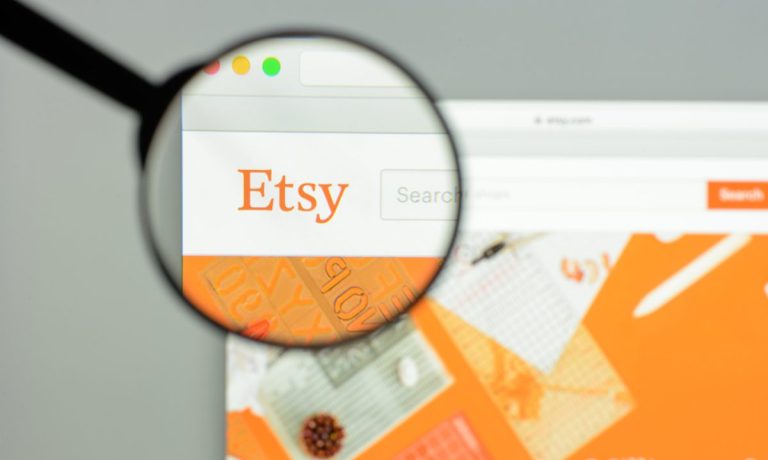
Despite concerns that consumers who flocked to Etsy at the height of the pandemic would disappear when more shopping options became available, executives at the online marketplace say they’ve seen nothing to suggest that is happening.
In fact, in the second quarter, Etsy added eight million new customers to its ranks, almost double the number of new buyers it was adding per quarter prior to the pandemic. Another four million buyers were reactivated after not making a purchase on Etsy in over a year.
“Even in the face of this renewed abundance of choice, again and again shoppers chose to return to Etsy,” CEO Josh Silverman told analysts and investors on a conference call, noting that Etsy’s total customer base is now approximately 90 million.
Chief Financial Officer Rachel Glaser added that “all signs indicate” that customers who found Etsy during the pandemic “are at least as valuable as those we acquired prior to the pandemic.”
Silverman added that he still sees opportunities for more consumer growth, even in the U.S. “There’s a lot of people who still haven’t experienced Etsy,” he said, as well as new demographics, such as men, that the marketplace is starting to lean into. Etsy’s core customer base is currently Generation X and millennial women.
Related: Etsy Says eCommerce Will Decelerate Even As New And Repeat Buyers Soar
New buyer growth has decelerated in recent months, particularly in the U.S., but that slowdown has been offset by a growth in sales per active buyer. Habitual buyers, defined as those who purchased on six or more days and spent at least $200 in the past year, grew 115 percent year over year, making this Etsy’s fastest-growing customer segment.
Etsy’s consolidated gross merchandise sales (GMS) were $3 billion in the second quarter, up 13 percent year over year; sales on Etsy’s own marketplace, as opposed to those made through subsidiaries, were $2.8 billion, up 14 percent.
Adding Up Acquisitions
Though Etsy’s separate acquisitions of resale platform Depop and Brazilian handmade marketplace elo7 are barely two months old, the company is wasting no time integrating them. Each business continues to have its own CEO and its own operations, but Glaser said Etsy is starting to look for operational optimizations, such as legal and finance departments, as well as payment options for customers.
Read more: Etsy Eyes Latin American Expansion With Second Acquisition This Month
Silverman didn’t rule out future acquisitions, but said that Etsy’s primary objective right now is integrating elo7 and Depop into the company. “It’s important to keep in mind that it will take multiple quarters and years to operationalize all the many ways that we believe can help Depop and elo7 grow,” he said.
Etsy is also continuing to work with music gear marketplace Reverb, which the company acquired in 2019. Silverman said the first job was to find ways for Reverb to improve conversion rates and optimize marketing efforts, and “we feel great about the progress to date.” For example, Reverb recently launched personalized recommendations, which Silverman said have helped both shoppers and people who are considering selling their gear. The company has also formed an international product team to introduce global-specific feature enhancements.
Read more: Etsy Wraps Up Purchase Of Fashion Resale Marketplace Depop
“We’re confident that the Reverb team is focused on the right areas and we are excited about their future opportunities,” the CEO said.
Even with the focus on new subsidiaries, Glaser noted that Reverb, Depop and elo7 represent less than 15 percent of Etsy’s total GMS. “They’re still important, we see huge opportunity for them, but they are relatively minor impacts,” she said.
Looking Ahead
In the third quarter, Etsy expects consolidated GMS, which will now include Depop and elo7, to be approximately $3 billion, about 12 percent growth versus last year. Glaser noted, though, that Etsy will likely be missing the pandemic-era purchases of face masks, which accounted for $264 million, or 11 percent, of Etsy’s GMS in the third quarter of 2020.
Looking ahead to the fourth quarter, Glaser warned analysts and investors that Etsy will likely struggle a bit compared to last year’s extended shopping season, stimulus payments and logistics disruptions that impacted other eCommerce players.
“We’ve previously pointed out that our comps get tougher as we progress [through] 2021, with Q1 2022 potentially our hardest go-forward comp,” she said.
Silverman said Etsy’s projections for the upcoming quarters assume the economy will be largely reopened and that people will be going about their lives much in the same way they were before COVID-19. For Etsy, this means a resurgence in wedding purchases, which saw 100 percent year-over-year growth in the second quarter, and home furnishings, which Silverman said “is seeing nice sustained growth.”